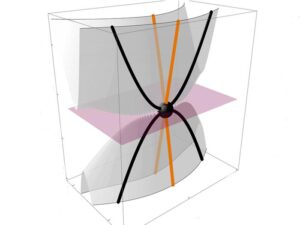Recent scientific discoveries in materials physics have yielded evidence of semi-Dirac fermions – unique quasiparticles that only have mass when moving in one direction. The discovery could open the door to breakthrough technological applications related to the control of electron flow in modern materials.
Theoretical Basis
The concept of semi-Dirac fermions was born as early as 2008-2009, when theorists at Université Paris Sud and the University of California at Davis predicted the existence of quasiparticles whose mass varies depending on the direction of motion. They would behave as massless, when moving in one direction, while in a perpendicular direction, they would have mass. For years this hypothesis remained a mathematical abstraction, until it was recently empirically confirmed.
Experiment and discovery
The breakthrough came thanks to research by a team from Pennsylvania State University and Columbia University led by Yinming Shao. The researchers used the material ZrSiS, a compound of zirconium, silicon and sulfur, which exhibits unusual properties under extreme conditions. Using magneto-optical spectroscopy with infrared light, they illuminated a cooled sample of the material, which was simultaneously subjected to a strong magnetic field.
Observations showed that electrons in ZrSiS behave differently depending on the direction of the magnetic field. When they moved along magnetic lines, their mass was zero, but in perpendicular motion, the mass appeared. This unique feature was compared to the movement of a train forced to change track – on one track it moves along with maximum speed, but when turning, it encounters resistance and gains mass.

Significance of the Discovery
The discovery of semi-Dirac fermions has far-reaching implications for science and industry. Understanding how particles change mass depending on the direction of motion could contribute to the design of new topological materials and applications in quantum electronics. Particularly promising are their potential for use in spintronics, a technology in which information is stored and processed using electron spins instead of electrical charge.
Although the discovery is groundbreaking, many questions still remain unanswered. Experiments have revealed features that require further theoretical modeling and empirical studies. The researchers promise to continue working to better understand these quasiparticles and to explore their potential applications in future technologies.
Sources: DOI: 10.1103/PhysRevX.14.041057, Pennsylvania State University press materials, Dziennik Naukowy (PL), Chip.pl






